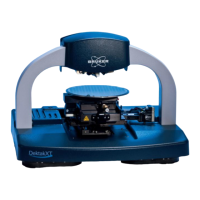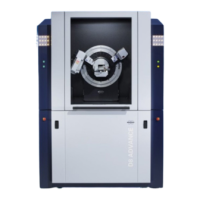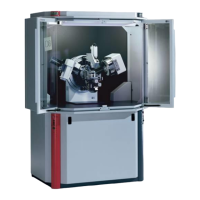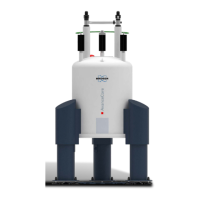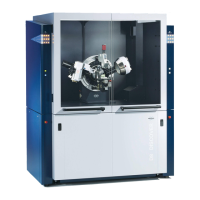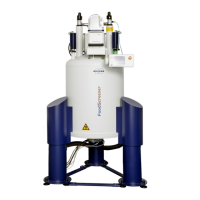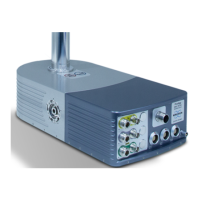User Manual D2 PHASER
DOC-M88-EXX141 V5 – 01.2015 6
Slit systems, slit and Soller modules and other passive optics
There are slit systems for the primary and secondary beam path. The primary slit system is able to
hold one slit module - the divergence slit module - and one axial Soller module. The secondary slit
system for 0D-detectors (scintillation counter and XFlash detector) is more complex and can hold the
antiscatter slit module, the secondary Soller module and the detector slit module.
There is an additional holder between the slit modules which can be used for absorber or filter
modules. The secondary slit system for 1D-detectors differs from that for 0D-detectors but it is also
possible to insert detector slit modules (detector window opening), absorber/filter modules and Soller
modules.
Slit and Soller modules (fig. 19 and 20) can be manually changed. The primary slit holder system (fig.
17) defines the divergence by the divergence slit module and the axial divergence by the Soller
module (fig. 18). The secondary slit system which is used for scintillation counters and XFlash
detectors (fig. 21 - 24) has positions for the antiscatter slit module ((a) in fig. 24), the detector slit
module ((d) in fig. 24), a position for an absorber or filter module ((c) in fig. 24) and a position ((b) in fig.
24) for an axial Soller module ((a), (b) in fig. 25). The secondary slit system for LYNXEYE-detectors
(fig. 27) has a position for a detector slit ((b) in fig. 28 and (b) in fig. 29), a position for an absorber or
filter module ((a), (b) in fig. 28 and (b) in fig. 29) and a position for an axial Soller module ((a) in fig. 27
and (a) in fig. 29).
Primary divergence slit systems
The slits in the modules are perpendicular to the measuring circle plane and parallel to the --axis.
The primary divergence slit module (fig. 18 and fig. 30) defines the sample area which is irradiated by
X-rays. The centre of the divergence slit is aligned to the connection line between the tube focus point
and the goniometer centre.
A Soller slit module ((a) and (b) in fig. 19) can be inserted under the cover of the pimary divergence slit
system (fig. 18). There are 1.5°, 2.5° and 4° Soller slit modules available. The primary Soller slit
module angle must fit with the secondary one.
The cover (fig. 30 and fig. 139) of the slit system reduces the X-ray background to a minimum and
shields the detector from parasitic radiation.
Secondary detector slit systems
All slit modules of the secondary slit systems are perpendicular to the measurement plane and parallel
to the goniometer centre axis as well. The secondary detector slit system for the LYNXEYE has three
positions for plug-in modules (fig. 28). Possible detector slit module positions are shown in fig. 28. The
slit defines the 2 angular window range of the 1D-detector.
There are 2 options: leave this position empty if you need the complete 1D-range of the detector, or
insert a 3mm plug-in slit module for LYNXEYE antiscatter slit extension for low angle measurements.
Onother plug-in slit holder is designed for absorber and filter modules ((b) in fig. 28 and fig. 29). The
third position is designed to hold the Soller slit module ((a) in fig. 29). The Soller slit module for
LYNXEYE detetors reduces the axial divergence to 1.5°, 2.5° or 4°, respectively.
The cover of the slit system for 0D-detectors avoids that scattered radiation reaches the detector
window, thus background is reduced to a minimum by shielding the detector from parasitic radiation.
The centre of the antiscatter slit module ((a) in fig. 24) of the 0D-slit system is aligned to the
connection line of the goniometer centre and the detector slit centre ((d) in fig. 24). This line defines
the secondary beam path. Position (c) is for an additional filter or absorber module. Position (b) is
intended to be used for the secondary Soller module with divergences of 1.5°, 2.5° and 4°. Note:
primary and secondary Soller slit modules must have the same divergence angle.
Slit module
The slit width is marked in millimetres on the fixed slit unit ((a) in fig. 31). Each slit module has a mark
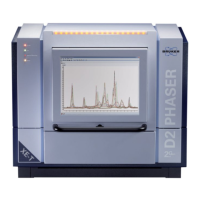
